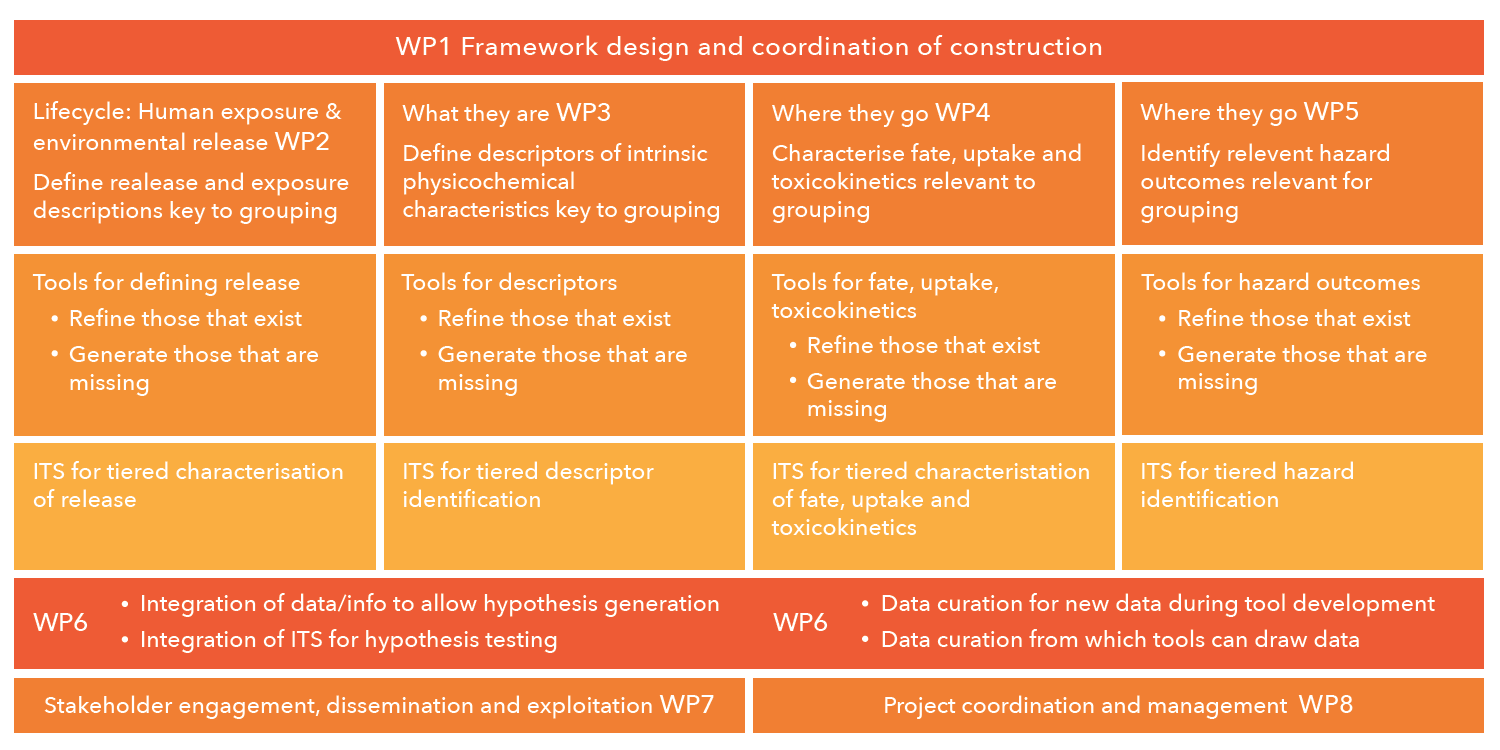Work Packages
GRACIOUS consists of 8 work packages (WPs) that are interlinked to generate the GRACIOUS Framework for Grouping and Read-across (see image).
The duration of the project will be divided into three rounds of development. The activities of WP2-6 will be iterative, allowing the project to test outputs continually, resulting in feedback and refinement in a progressive and strategic manner. More information about each WP can be found in the related links section.
WP1 will design and coordinate the construction of the Framework, which will then be built by defining the descriptors and endpoints relevant to hypotheses generation for grouping and read-across (WP2-5).
To generate the knowledge and data needed to identify and test these hypotheses Intelligent Testing Strategies (ITSs) will be developed to cover all domains of relevance for risk assessment:
- Lifecycle environmental release and human exposure (WP2)
- What they are: physicochemical identity (WP3)
- Where they go: Environmental fate, uptake and toxicokinetics (WP4)
- What they do: human and environmental toxicity (WP5)
These descriptors and endpoints will define the tools needed to accept, reject or refine the hypotheses, which will then be built into a series of ITSs before integration into a Framework (WP6).
The ITSs will reduce, refine and replace (where possible) the need for animal testing by promoting the use of modelling (e.g. in silico, fate, exposure), in vitro and cell-free tests.

